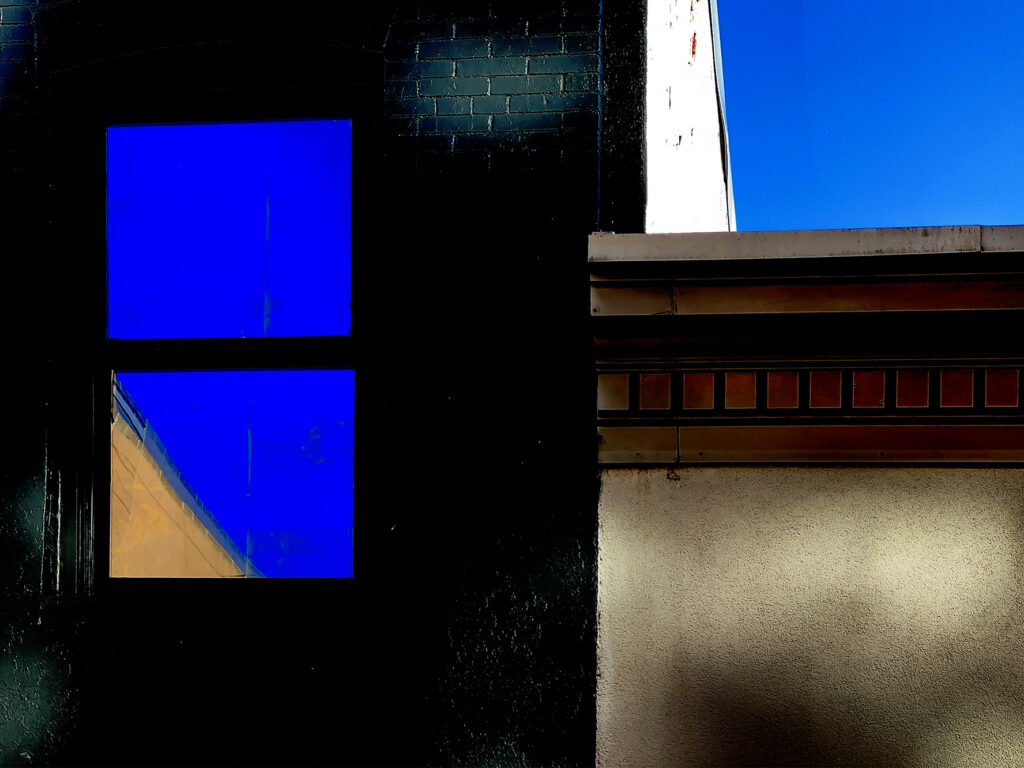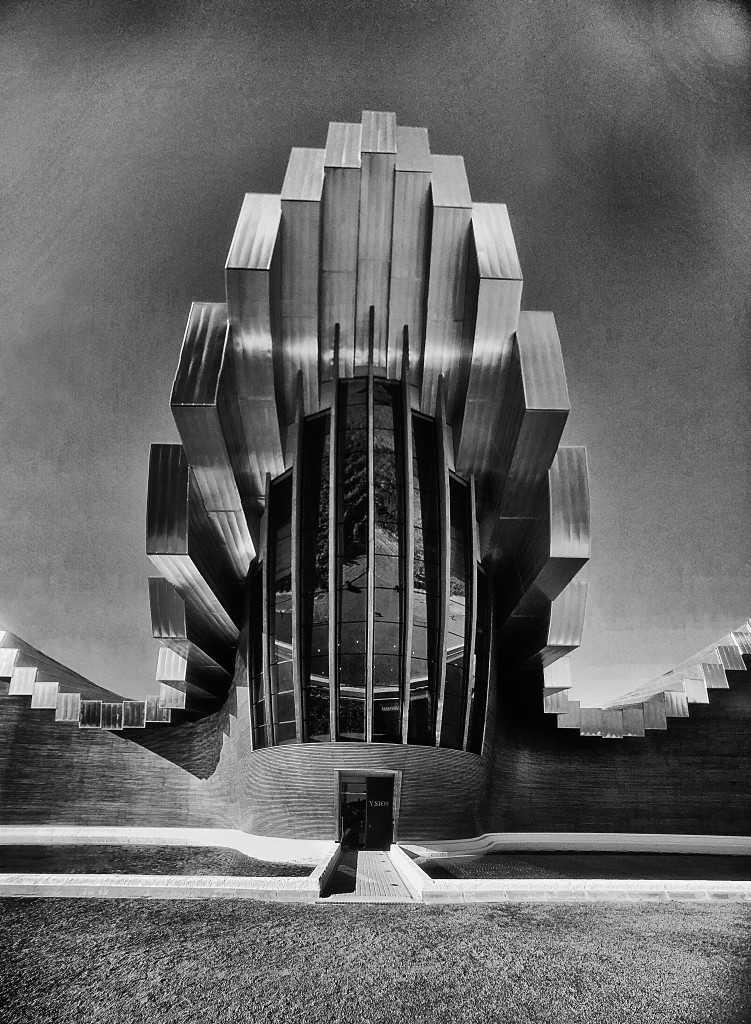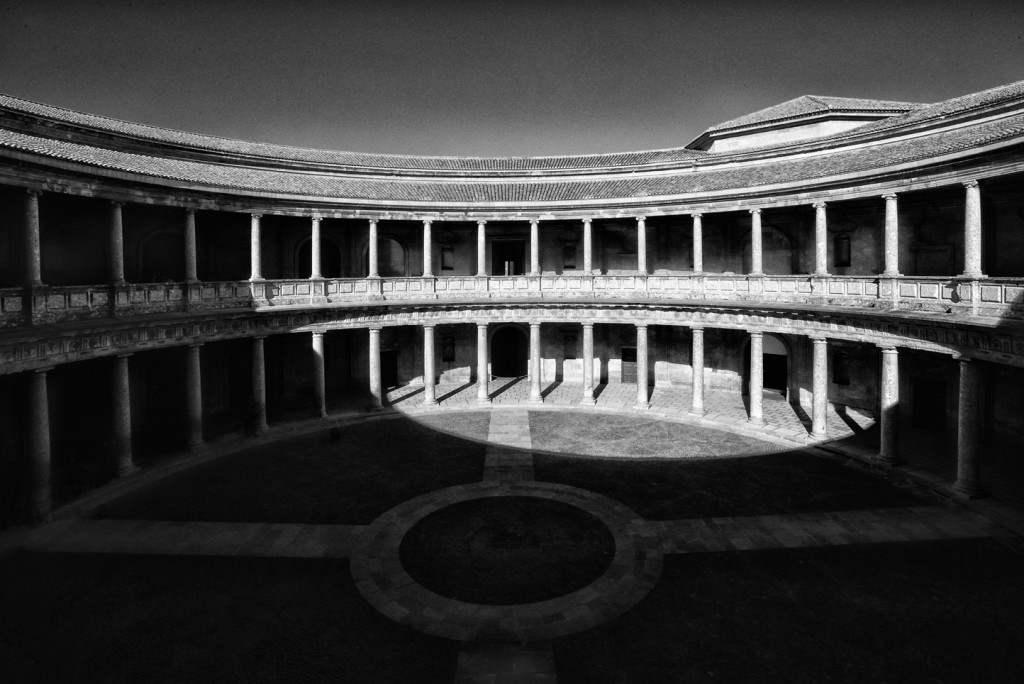Bodegas Ysios
This is an iPhone capture using a wide angle Moment lens mounted on my phone. The location is Bodega Ysios in Laguardia, Spain, in Rioja. This place has been on my bucket list for years. The architect is Santiago Calatrava of whom I am I big fan. What's cool about the image is that during the conversion from RGB to grayscale, those strange artifacts popped up in the upper corners, For me that's a positive, not a negative.
Palacio Carlos V
The interior courtyard of the Palacio Carlos V in Granada, Spain. The architect was Pedro Machuca, and construction started in 1527. It is an architectural gem just begging for black & white photography.
Greek Geometry
A black and white triptych made with film; Astypalea, Greece.
I spent two months this summer on small Mediterranean islands. Although I captured color images digitally, all my B&W work was exposed on 120 film using a Hasselblad. Needless to say upon returning home, it was thrilling to process B&W negatives and to make work prints. For the past several months I've been printing B&W images digitally; I'm convinced that my return to black and white film and format cameras justifies a dedicated B&W printer. More on that in the New Year.
Spanish Diptych
Photographing in Spain always brings out the BOLD in me. My first trip there was in 1974, and I ended up staying for a while with my girlfriend's mother on Ibiza during the late winter. I was just starting to make photographs; I didn't have a clue what to do with a camera other than push the shutter release. One image I made was of small hilly, mountainous island jutting out of the Mediterranean with the weak winter sun behind it. Later, back home someone saw the photograph and told me what an artist I was. I had never even considered the possibility of being an artist. Bottom line, that photograph plus a couple of others from around New England got me hooked on photography. A year later I quit my day job, I hopped on a Polish freighter, and I moved to Europe with all the accoutrements for a B&W darkroom (Those were the days). Once in France, I started to teach myself photography. That didn't mean I was a photographer yet, even by a long stretch of the imagination. But I had the bug, and I started to learn. During the year-and-a-half that I lived in Europe I spent a lot of time in Spain. And after I came back to the United States, I periodically returned to Spain to visit friends and to photograph. My most recent Spanish sojourn was for my wife's 50th birthday several years ago. It was one of my last trips using film as my primary photographic medium (although I was beginning to dabble with a digital point-and-shoot camera). From that last Spanish visit, here are a pair of Spanish images, bright in color, abstract in composition, intentionally painterly, and without manipulation.
Say Hello To My Little Friend
I'm just getting into four/thirds. So what's a four third? It's a digital camera format developed by Panasonic and also embraced by Olympus. I recently bought a used Panasonic G-1 with a 14mm-40mm lens on Ebay for next to nothing.It's a small interchangeable lens digital camera producing a 12 mp file. It's tiny compared to my Nikon D700. The image quality is fantastic. Four/thirds refers to the size of the sensor. Without sounding like a spokes person for Panasonic, let me say the really cool thing about this camera is its ability to use almost any existing 35mm format lens; i.e. Leica M's, Nikons AI, Canons, through the use of adapters. The thing to consider is that because the G-1 sensor is small, a regular 35mm focal length lens is twice the focal length value for the G-1. In other words a normal 35mm camera lens would be a 50mm; that lens on a G-1 becomes a telephoto 100mm. Having said that, I found a Taylor Hobson Cooke 25mm f 1.5 cine lens and mounting it on my G-1 with a "C" mount adapter, I started shaking hands with a potentially great little system.
Consider this image. The swirling bokeh effect is the Cooke lens opened all the way up. I made three different exposures, hand held, each with a 2 stop different EV. (The G-1 does this effortlessly with a quick settings adjustment.) The files were RAW file format, and after downloading them into my computer, I opened them up in PhotoMatrix and let that application work its digital magic. While I was still in PhotoMatrix, I performed some tonemapping, processed the file as a High Definition Range (HDR). Sounds like a long way to go. It's really not. (I resisted HDR for a long time as being too gimmicky: but I must admit I've fallen under its spell.)
I was in Manhattan for several days this past week, and I used my G-1 for some street shooting. The first image is a reflection in a Jim Polshek building, The Cornell Weill Medical Research building on the corner of 70th Street and York Avenue. It's a straight capture using the 14mm-40mm lens that came with the camera.
The second image is an unmanipulated capture of a standpipe. You have to love the reds against the black. I think the resolution is great. i can't wait to see where my little friend and I go.









